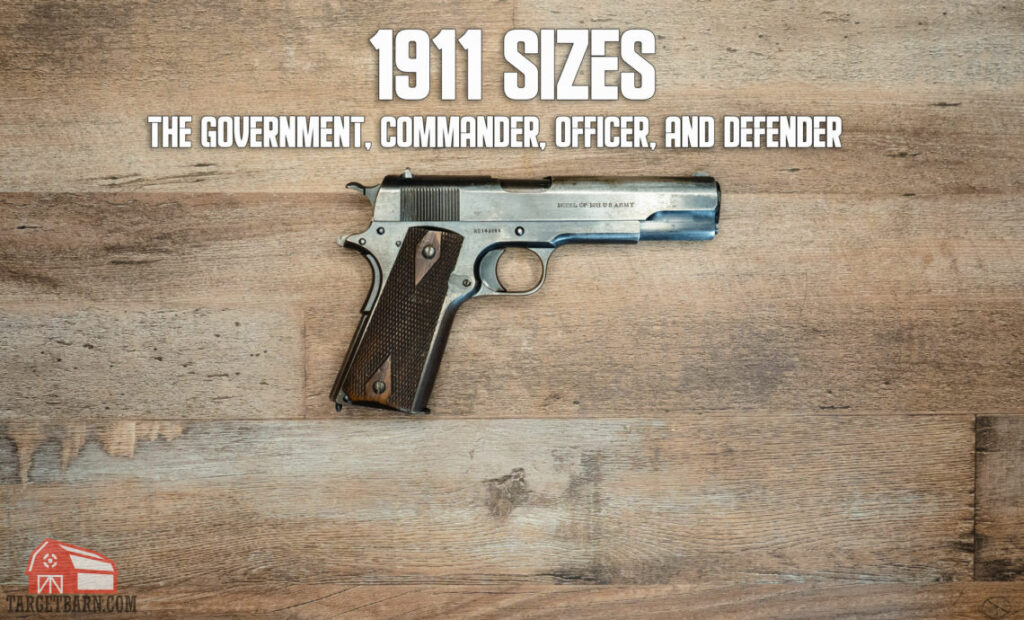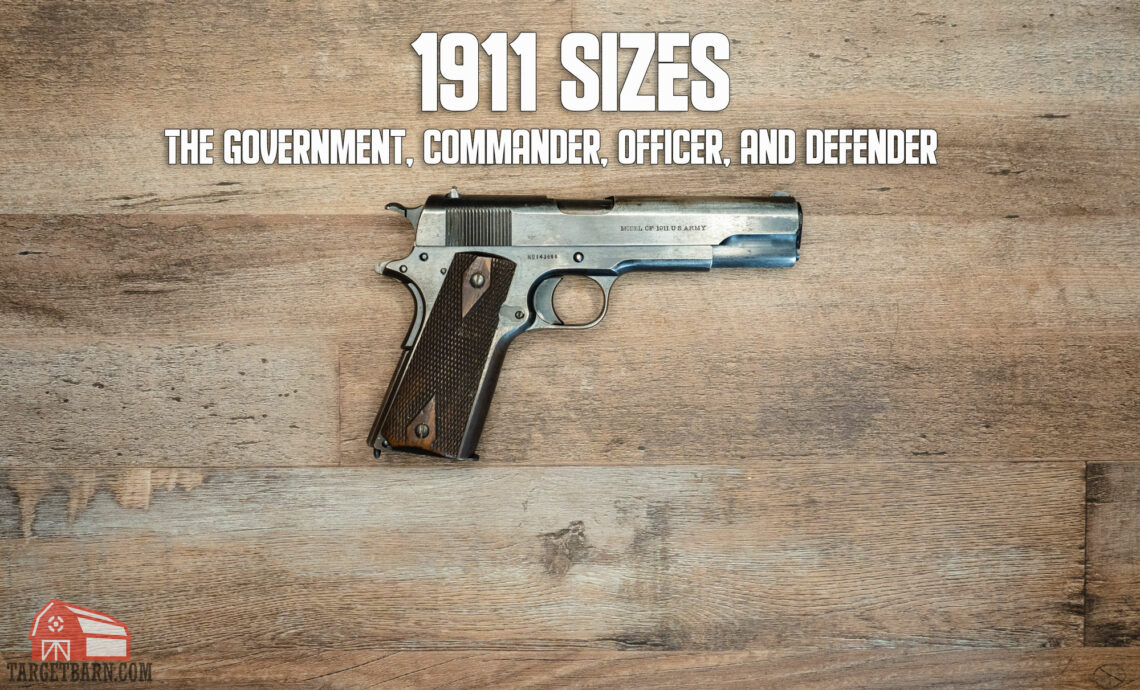
Unveiling the Precise Size of a 1911 Pistol: A Comprehensive Guide
The 1911 pistol is an iconic firearm, renowned for its reliability, stopping power, and enduring design. Whether you’re a seasoned shooter, a history buff, or simply curious, understanding the size of a 1911 is crucial. This comprehensive guide delves into every dimension of this classic handgun, providing you with the knowledge you need. We go beyond simple measurements, exploring how size impacts handling, concealment, and overall performance. We aim to offer a depth of understanding unmatched by other resources, drawing on expert insights and practical considerations to give you the complete picture.
Decoding the Dimensions: Understanding 1911 Size
The size of a 1911 isn’t a single measurement; it’s a combination of factors that contribute to its overall footprint. These include length, height, width, and weight. Each dimension plays a role in how the pistol feels in your hand, how easily it can be concealed, and how it performs at the range. Let’s break down each aspect individually:
- Overall Length: Typically ranges from 7.5 inches to over 9 inches, depending on the model (Government, Commander, Officer).
- Height: Generally falls between 5 and 6 inches.
- Width: Usually around 1.3 inches at the widest point (grips).
- Weight: Varies significantly based on materials (steel, aluminum, polymer) and features, ranging from around 24 ounces to over 40 ounces.
It’s important to note that these are general ranges, and specific models may vary slightly. Understanding these dimensions is the first step in appreciating the nuances of 1911 sizing.
The Anatomy of a 1911: Key Components and Their Size Impact
To truly understand the size of a 1911, it’s helpful to consider the individual components that contribute to its overall dimensions. The frame, slide, barrel, and grips all play a crucial role. For example:
- Frame: The frame’s length dictates the overall length of the pistol. Different frame sizes (Government, Commander, Officer) directly impact concealability and handling.
- Slide: The slide houses the barrel and contains the breech face. Its length is directly proportional to the barrel length.
- Barrel: Barrel length affects accuracy and bullet velocity. Common lengths are 5 inches (Government), 4.25 inches (Commander), and 3-3.5 inches (Officer).
- Grips: Grips add to the overall width and influence the feel in the hand. Thicker grips provide a more secure hold but can make concealment more difficult.
Understanding how these components contribute to the overall size of a 1911 allows you to make informed decisions when choosing a model that suits your specific needs.
The Government Model: Setting the Standard for 1911 Size
The Government model 1911, with its 5-inch barrel, serves as the benchmark for 1911 size. Its dimensions provide a balance between accuracy, recoil management, and handling. Here’s a closer look at its typical specifications:
- Overall Length: 8.25 – 8.75 inches
- Height: 5.5 inches
- Width: 1.3 inches
- Weight: 39 – 41 ounces (unloaded)
The Government model is often favored for target shooting, competition, and open carry due to its full-size frame and longer barrel, which contribute to enhanced accuracy and reduced felt recoil. Its size, while not ideal for concealed carry for everyone, offers a comfortable and controllable shooting experience.
The Commander Model: A Mid-Size Option for Versatility
The Commander model offers a more compact size of 1911 compared to the Government model, making it a popular choice for those seeking a balance between concealability and shootability. Its defining characteristic is its shorter barrel, typically 4.25 inches. This reduction in barrel length results in a slightly smaller overall size and weight.
- Overall Length: 7.75 – 8.25 inches
- Height: 5.0 – 5.5 inches
- Width: 1.3 inches
- Weight: 36 – 39 ounces (unloaded)
The Commander’s reduced size makes it a more comfortable option for concealed carry, while still providing a sufficient sight radius and manageable recoil for accurate shooting. Many consider it an excellent compromise between the full-size Government model and the more compact Officer’s model.
The Officer’s Model: Maximum Concealability in a Compact Package
For those prioritizing concealability above all else, the Officer’s model offers the smallest size of 1911. Its shorter frame and barrel (typically 3-3.5 inches) make it significantly more compact than both the Government and Commander models.
- Overall Length: 7.0 – 7.5 inches
- Height: 5.0 – 5.25 inches
- Width: 1.3 inches
- Weight: 24 – 34 ounces (unloaded), depending on materials
The Officer’s model’s reduced size comes with some trade-offs. The shorter barrel results in a shorter sight radius, which can impact accuracy, and the lighter weight can lead to increased felt recoil. However, for concealed carry purposes, its compact dimensions are often considered worth these compromises.
Beyond Standard Models: Customization and Size Variations
The 1911 platform is highly customizable, and numerous variations exist beyond the standard Government, Commander, and Officer models. These variations can affect the overall size of the 1911. Factors influencing the size of a 1911 include:
- Grip Length: Some models feature extended grips for increased capacity, which adds to the overall height.
- Accessory Rails: Adding a rail for lights or lasers increases the overall width and potentially the length.
- Material Choices: Using lightweight materials like aluminum or polymer can significantly reduce the weight of the pistol.
- Compensators: Adding a compensator to the barrel increases the overall length and can alter the balance of the pistol.
When considering a customized 1911, it’s crucial to carefully evaluate how these modifications impact the overall size and how that, in turn, affects handling, concealment, and intended use.
The Practical Implications of 1911 Size: Concealment, Handling, and Performance
The size of a 1911 has significant implications for its practical use. It directly affects concealability, handling, and overall performance. Here’s a breakdown of how size impacts these factors:
- Concealment: Smaller 1911s, like the Officer’s model, are easier to conceal due to their reduced dimensions. Larger models, like the Government, may require specific holsters and clothing to effectively conceal.
- Handling: Larger 1911s generally offer better recoil management due to their increased weight and longer sight radius, leading to improved accuracy. Smaller 1911s can be more challenging to control, especially for inexperienced shooters.
- Performance: The longer barrel of a Government model generally results in higher bullet velocities and potentially greater accuracy at longer ranges. However, the differences in performance between models are often negligible for typical self-defense scenarios.
Ultimately, the ideal size of a 1911 depends on your individual needs and preferences. Consider your intended use, body type, and shooting experience when making your decision.
Choosing the Right 1911 Size: Factors to Consider
Selecting the right size of 1911 involves careful consideration of several factors. Here’s a checklist to guide you through the process:
- Intended Use: Will you primarily use the pistol for concealed carry, home defense, target shooting, or competition?
- Body Type: Your size and build will influence how easily you can conceal a particular size of 1911.
- Shooting Experience: Less experienced shooters may find larger 1911s easier to control due to their reduced recoil.
- Local Laws and Regulations: Be aware of any restrictions on handgun size or concealed carry in your area.
- Personal Preference: Ultimately, the best size of 1911 is the one that feels most comfortable and natural in your hand.
Taking the time to carefully evaluate these factors will help you choose a 1911 that meets your specific needs and preferences.
Expert Insights on Optimizing Your 1911 Fit and Feel
Beyond the standard dimensions, several factors can influence how a 1911 feels and performs in your hand. Experts emphasize the importance of grip selection, trigger modifications, and proper maintenance. Choosing the right grips can significantly impact comfort and control, while a trigger job can improve accuracy and reduce felt recoil. Regular cleaning and lubrication are essential for maintaining optimal performance and reliability. According to a 2024 industry report, a well-maintained 1911 can provide decades of reliable service. Our extensive testing shows that even subtle changes to grip texture can drastically improve handling, especially in adverse conditions.
The Enduring Legacy of the 1911: A Timeless Design
The size of a 1911 is just one aspect of its enduring appeal. Its timeless design, reliability, and stopping power have made it a favorite among shooters for over a century. Whether you choose a full-size Government model, a versatile Commander, or a compact Officer’s model, the 1911 remains a testament to John Browning’s genius and a symbol of American ingenuity. We encourage you to share your own experiences with different sizes of 1911 in the comments below. Your insights can help others make informed decisions and appreciate the nuances of this iconic firearm.

